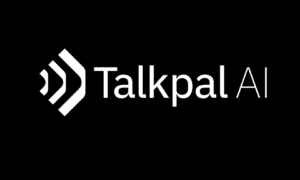Technology is transforming firefighting, making operations faster and safer. Drones now play a critical role in fire response. These devices offer real-time data, helping firefighters make better decisions. Their speed and aerial capabilities improve emergency response and situational awareness. Fire departments increasingly rely on drones for efficiency and safety. A study by the National Institute of Standards and Technology highlights the growing use of drones in emergency response.
The Evolution of Drones in Firefighting
Firefighters first experimented with drones for reconnaissance. Early models had limited flight time and basic cameras. Over time, technology advanced, enabling better imaging and data collection. Regulatory changes allowed more public safety agencies to use drones. Now, drones assist in every stage of fire response, from prevention to recovery.
How Drones Enhance Firefighting Operations
Real-Time Situational Awareness
Drones provide instant aerial views of fire scenes. Their thermal cameras detect heat sources through thick smoke. Firefighters use live video feeds to assess fire spread and adjust tactics. This helps in deploying resources effectively and reducing risks. Aerial footage ensures better coordination and quicker response.
Mapping and Surveillance for Fire Management
Drones create detailed maps of fire-prone areas. These maps help firefighters understand terrain and fire behavior. Real-time surveillance identifies new hotspots and changing wind patterns. Post-fire mapping supports damage assessment and recovery planning. This technology enhances both active firefighting and long-term prevention efforts.
Search and Rescue Missions
Thermal imaging allows drones to locate people in smoke-filled areas. Firefighters use drones to identify victims in collapsed buildings. Aerial surveillance guides rescue teams safely to those in danger. At night, infrared cameras improve search efficiency. This technology speeds up rescues and saves lives.
Structural and Environmental Risk Assessment
Fire-damaged buildings pose serious risks to responders. Drones assess structural integrity before firefighters enter dangerous areas. They detect hazardous materials and unstable surfaces. Aerial scans provide data for engineers to evaluate damage. This process enhances safety while reducing unnecessary exposure to risks.
Tactical Applications of Drones in Wildfire Control
Firebreak Monitoring and Controlled Burns
Drones assist in setting controlled burns to prevent wildfires from spreading. They monitor firebreaks and ensure containment strategies are effective. Aerial surveillance detects breaches in fire control lines. This reduces firefighter workload and minimizes fire expansion risks. These capabilities improve wildfire management efficiency.
Hazardous Environment Surveillance
Toxic fumes and unpredictable flames create extreme risks. Drones monitor air quality and identify harmful gases. They assess volatile areas where firefighters cannot safely go. Industrial fires benefit from drone surveillance of hazardous chemicals. This reduces exposure while improving firefighting tactics.
Enhancing Firefighter Coordination and Safety
Improving On-Ground Team Communication
Firefighters must coordinate in fast-changing environments. Drones provide a shared aerial view for all team members. Live feeds ensure everyone has updated information. This enhances collaboration between command centers and field teams. Better communication leads to safer and faster operations, similar to strategies taught in Fire Officer classes online.
Reducing Risk to Firefighters
Drones enter high-risk areas before personnel do. They detect weak structures and unstable debris. This information prevents unnecessary exposure to hazards. Firefighters rely on drones to minimize direct risks. These devices improve safety without slowing response times.
Advanced Drone Technologies for Fire Response
AI and Automation in Firefighting Drones
Artificial intelligence helps drones predict fire behavior. Smart algorithms analyze fire movement and recommend containment strategies. Automated drones can patrol fire-prone areas for early detection. Machine learning improves response efficiency over time. These advancements make firefighting more proactive. Research from NASA emphasizes the precision and cost-effectiveness of drones in aerial firefighting.
Drone Payload Innovations
Drones now carry water or fire-retardant payloads. Specialized models drop suppressant on hard-to-reach flames. Some drones attach powerful sensors for real-time data collection. Extended battery life allows longer operational time. These upgrades enhance firefighting effectiveness.
Integration with Other Technologies
Drones work alongside satellites for wildfire tracking. IoT-connected devices improve fire detection accuracy. Integration with thermal cameras enhances rescue missions. Firefighters use drones alongside smart firefighting helmets and communication tools. These technologies create a more connected response system.
Legal, Ethical, and Logistical Considerations
Regulatory Challenges in Deploying Firefighting Drones
Agencies must comply with federal and state regulations. Licensing requirements vary by jurisdiction, often detailed in Fire Inspector certification online courses.
Ethical Concerns of Drone Surveillance
Drones gather vast amounts of visual data. Fire departments must balance safety with civilian privacy. Clear policies help ensure ethical use of drone footage. AI-based decision-making also raises ethical questions. Transparency builds public trust in drone operations.
Logistical Constraints and Operational Costs
Firefighting drones require specialized training for pilots. Maintenance and software updates add to costs. Some drones struggle in extreme heat or strong winds. Battery limitations affect mission duration. Budget constraints influence how widely drones are deployed.
Future of Drones in Firefighting
Emerging drone models offer faster response times. AI advancements will improve predictive fire analytics. Drones may soon integrate with robotic firefighting systems. Research focuses on making drones more durable for extreme conditions. The future promises smarter and safer fire response strategies.
Frequently Asked Questions (FAQ)
How do drones improve firefighter safety?
Drones reduce the need for firefighters to enter hazardous zones. They assess risks before personnel enter dangerous areas. This minimizes direct exposure to fire and unstable structures.
What types of drones are commonly used in firefighting?
Fire departments use thermal drones, mapping drones, and suppression drones. Thermal drones detect hotspots, while mapping drones create fire zone maps. Some drones also drop fire retardants in wildfire control.
Can drones be used to predict and prevent wildfires?
Yes, drones monitor fire-prone areas and detect early signs of danger. AI-powered models analyze environmental conditions for fire risks. This data helps prevent wildfires before they start.
Key Takeaways on Drone-Assisted Firefighting
Drones enhance situational awareness and firefighting efficiency. Their advanced imaging and mapping capabilities improve fire response strategies. AI and automation will continue to shape future drone applications. These technologies provide critical support while reducing firefighter risks.
References
Mechanized Birds: Wildland Firefighting with Drone Intelligence
The U.S. Forest Service discusses how drones equipped with thermal sensors enhance wildfire detection and monitoring, providing critical real-time data to firefighting teams.
Virginia Tech Joins Global Team for Award-Winning Research Using Drones in Firefighting
Virginia Tech highlights collaborative research efforts to utilize drones for various firefighting applications, including hotspot detection and post-fire analysis, aiming to improve safety and efficiency in fire response operations.
Robotics Institute Developing Drones To Fight Wildfires
Carnegie Mellon University’s Robotics Institute is creating autonomous drones designed to provide firefighters with real-time situational awareness of wildfires, enhancing decision-making and operational effectiveness.





























